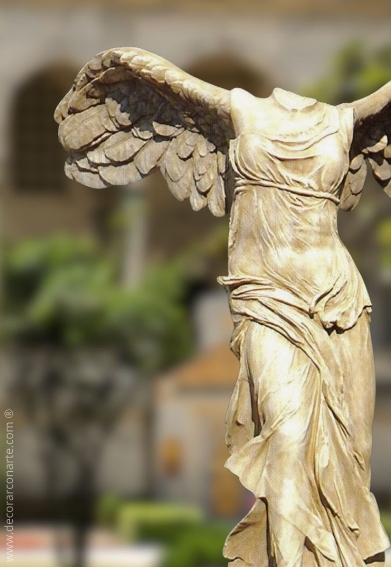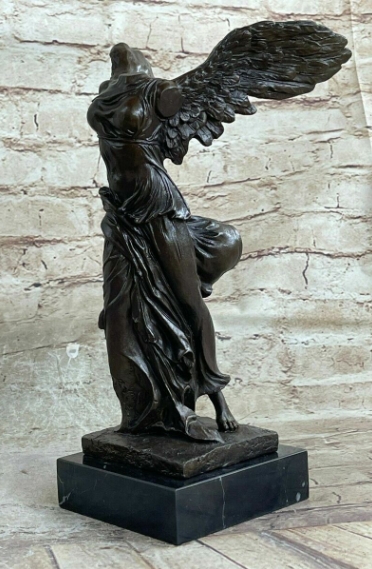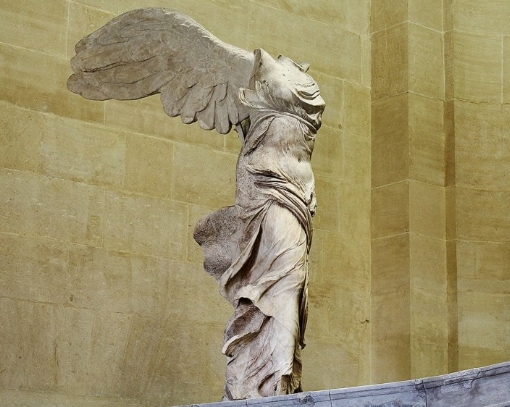Athena Nike of Samothrace is a great Greek sculpture masterpiece that shows the ancient Greeks’ reverence for victory and sports. The statue was originally located in a holy place on the island of Samothrace, symbolizing the glory and triumph of the goddess of victory in battle. Today, this statue has become a world-famous art treasure, stored in the Louvre, attracting countless art lovers.
The special thing about this statue is its dynamic presentation. The goddess Nike stands with wings spread, as if she has just descended from the sky, and her dress flutters in the wind, perfectly capturing the moment of flying. This flowing beauty and the combination of strength and beauty are the pinnacle of the study of human form and movement in ancient Greek sculpture. The statue not only reflects the sculptor’s deep understanding of anatomy, but also shows their artistic expression of emotion and strength.
Greek sculpture has achieved a perfect balance in this work. By capturing the goddess’s posture, the sculptor solidified the moment of victory in the eternal stone, allowing the viewer to feel the hope and victory brought by the goddess when appreciating this artwork. The image of Nike is of great significance in ancient Greek culture. She symbolizes the glory of triumphant return and the victory of mankind in battle and struggle. This sculpture is not only a masterpiece of art, but also a lofty tribute to the ancient Greek spirit.
Through these great works, we can get a glimpse of the ancient Greek artists’ deep understanding of movement, victory and beauty, and feel the indelible cultural heritage they left for future generations.




